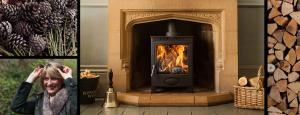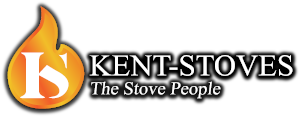The best wood for burning in stoves…
To get the best heating results from your stove hardwoods are generally better for burning than softwoods. As a rule of thumb hardwoods are produced by slow-growing deciduous trees and therefore the logs have a greater density than the faster growing softwoods from evergreen trees.
Since hardwood logs are heavier than the same sized softwood logs they will provide you with much more heat output – up to 50%.
For the stove owner, using hardwood logs means having to fill the stove up less often than they would with softwood logs.
Most important: Only ever use dried, fully seasoned chopped wood logs with a moisture content of less than 20%. Always check with your supplier when the wood was cut and how long has it been drying: This should be a minimum of 2 years.
As a rule of thumb, wood which is well seasoned makes a distinctive ‘clack’ rather than a dull ‘thud’ when knocked together. It will also feel much lighter than an unseasoned log.
Other indicators of a seasoned logs include the bark peeling away and cracking and splitting of the wood around the outside. It should be stacked off the ground with plenty of space between the logs to allow air movement and with the top covered to keep rain and snow out.
Using damp wood will…
- Be very hard and very slow to start.
- Be difficult to keep going or to keep burning well.
- Produce a very low heat output.
- Make the glass and firebricks dirty.
- Create excessive and rapid creosote build-up in the flue system and chimney.
Can we help?
If you would like assistance with your new or existing stove please make contact and one of our registered fitters will be happy to assist.




